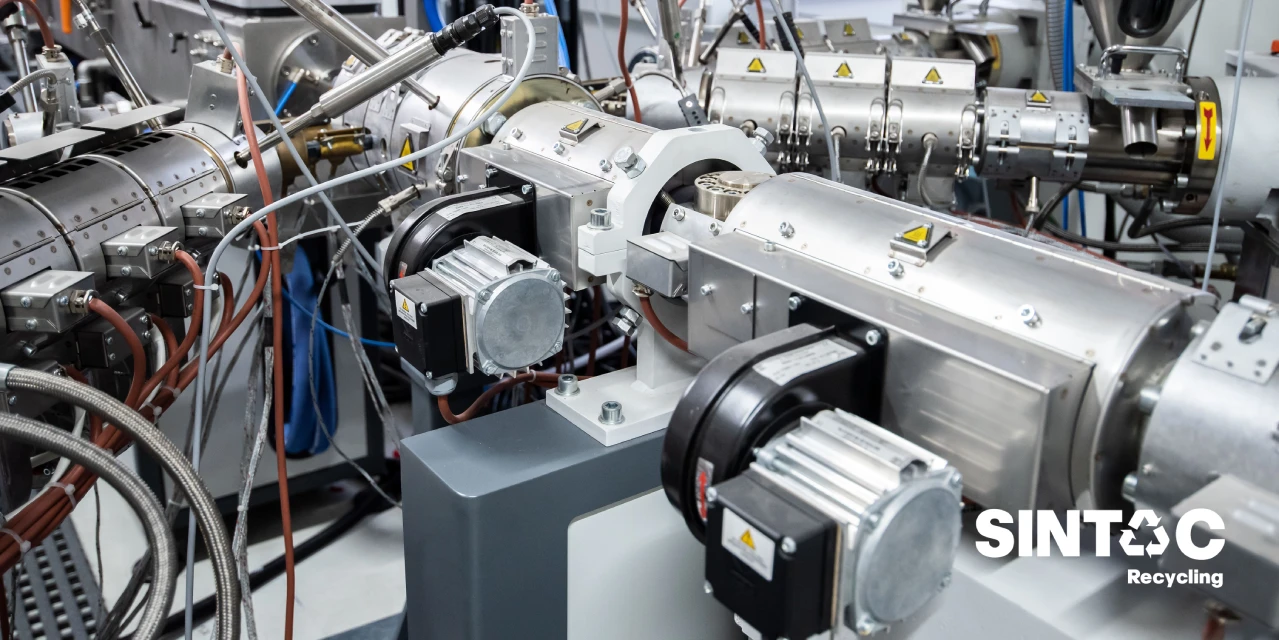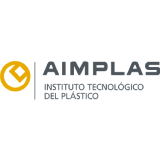What is extrusion? Meaning and process
Nowadays, the constant evolution of technology has made it possible for there to be various techniques for processing plastic materials, such as blown film, injection molding, extrusion and thermoforming. Of these, plastic extrusion is one of the most popular processing methods, thanks to its cost-effectiveness and flexibility.
What is plastic extrusion?
Extrusion is a manufacturing process in which a molten material is pressed through a die to produce an object with a constant cross-section. The extrusion process is not only applied to plastics, but also to many other materials, such as metals or ceramics, resulting in a wide range of products. In the field of plastics, extrusion is undoubtedly one of the most important processing methods. Machines called extruders are used to extrude plastics, with screw or single-screw extruders being the most commonly used. In the extrusion process, the polymer is usually fed in solid form and leaves the extruder in a molten state.
What is the extrusion process?
The extrusion of plastics stands out for its great versatility. It is a mechanical industrial process in which plastic is forced through a mold by continuous flow with pressure and thrust to give it the desired shape. The molten polymer is forced through a mold by the pressure generated by the rotation of a concentrically rotating spindle in a temperature-controlled chamber. The polymeric material is introduced through a mold by a continuous flow with pressure and thrust until the desired shape is achieved.
Extrusion is a technique used mainly in the manufacture of products as diverse as sheets, tubes, bottles and films. It also allows the processing of a wide range of plastics, from synthetics to natural plastics, whose properties differ and are used in multiple applications.

The different types of extrusion
Although there are different plastic extrusion processes, the fundamental principles do not vary. Depending on the complexity and thoroughness of the die shape, the type of plastic extrusion process will depend.
Today, manufacturers in the industry employ four types of processes:
Pipe Extrusion
Pipe extrusion follows the same general process of extruding plastics to the die or head section. To produce hollow sections, extrusion operators insert a pin into the die and then apply positive pressure to the internal cavities through the pin. In situations involving multiple holes, manufacturers place more than one pin in the center of the die. The number of pins depends on the number of holes desired.
This process is ideal for the manufacture of tubes and hollow parts, such as pipes and long tubes.
Blown film extrusion
Blown film extrusion is a popular method for creating items such as shopping bags. As with pipe extrusion, the die is the main difference from normal extrusion.
The blown film extrusion die is a vertical cylinder with a circular opening. Two pressure rollers pull the molten plastic from the die upward for use in this process. As the film rises, the air ring surrounding the die cools it.
In the center of the die is an air outlet that allows compressed air to be pumped into the center of the circular extruded plastic profile to produce a bubble. This results in a proportional expansion of the cross-section of the circular extruded plastic. Finally, pressure rollers flatten the bubble produced into a double-layer film with a width equal to half the bubble circumference. This double-layer film has a variety of uses, from cutting into different shapes to winding or printing. It can also be heat-sealed to make bags and other items.
Film extrusion
This process requires a stretching and winding process to achieve the desired shape. The surface texture of the film surface is determined, as well as its thickness. A head or flat die is used in its manufacture and after extrusion, rollers are used to stretch, cool and roll the formed film.
Rolling ensures that the desired shape is obtained and facilitates its permanent cooling and solidification.
Overextrusion
This type of plastic extrusion is intended to give the material a plastic coating. It is suitable for the production of insulating cables. Two plastic extrusion heads are used for this purpose: the pressing head and the coating head.
Although both types of die have their uses, the one used for cable sheathing depends on the required contact between the plastic material and the cable. The crimping head is ideal if very close contact or adhesion between the cable and the material is required. On the other hand, if contact is not necessary, the sheathing head is the best choice.













